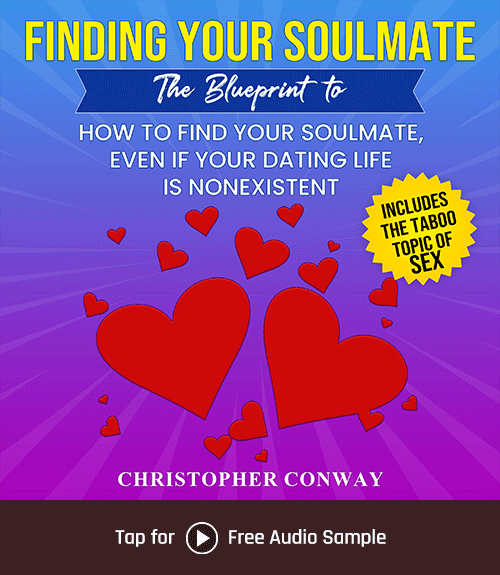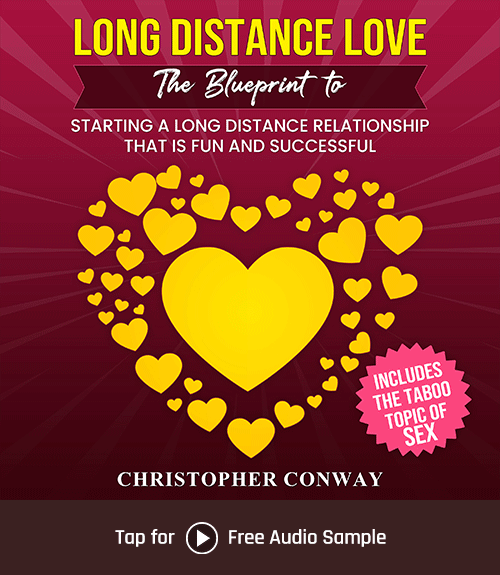You’re about to embark on a fascinating journey exploring the ever-evolving dynamics of dating. Over the years, the way we approach the delicate balance between independence and partnership has undergone significant transformations. From traditional gender roles to the rise of online dating, this article will shed light on the myriad ways in which our approach to dating has shifted. So fasten your seatbelts, dear reader, as we navigate the twists and turns of this captivating subject. Get ready to discover how the tides have changed in the realm of romance.
Traditional Gender Roles
Expectations of men and women in relationships
In traditional gender roles, there were clear expectations for men and women in relationships. Men were typically seen as the breadwinners, responsible for providing for the family financially. Women, on the other hand, were expected to be homemakers, taking care of the household chores, raising the children, and providing emotional support to their partners. These traditional roles often reinforced gender stereotypes and restricted individuals from fully exploring their potential in other areas of life.
Roles of breadwinners and homemakers
The roles of breadwinners and homemakers, although rooted in traditional gender norms, played a significant role in shaping relationships. Men were expected to excel in their careers and bring in a significant income to support their families. This often placed a heavy burden on them to prioritize work over personal fulfillment. Women, as homemakers, were expected to focus solely on the household and be dependent on their partners financially. This division of responsibilities often created an imbalance of power within relationships.
Shift in Gender Roles
Breaking down traditional stereotypes
In recent years, there has been a significant shift in gender roles, as society recognizes the need to break down traditional stereotypes. Men and women are no longer confined to predefined roles and expectations. This shift has allowed individuals to explore their true passions and aspirations, regardless of their gender. Breaking down traditional stereotypes has been crucial in fostering healthy and equal partnerships, where both individuals can contribute to the relationship in various ways.
Equal division of responsibilities
With the breakdown of traditional stereotypes, there has also been a push for an equal division of responsibilities in relationships. Couples now strive to share household chores, child-rearing duties, and emotional support more equally. This equal division of responsibilities fosters a sense of partnership and cooperation, strengthening the bond between individuals. It also allows both partners to maintain a healthy work-life balance and pursue personal interests outside of their relationship.

Online Dating
Increased choice and autonomy in dating
The advent of online dating platforms has revolutionized the dating landscape, providing individuals with increased choice and autonomy in their dating lives. You now have the opportunity to explore a wider pool of potential partners and can connect with people beyond your immediate social circles. This increased choice allows you to be more selective in finding someone who aligns with your values, interests, and goals.
Building connections before meeting in person
Online dating has also provided a platform for individuals to build connections before meeting in person. You have the opportunity to engage in meaningful conversations, share experiences, and get to know someone on a deeper level before committing to a physical meeting. This allows for a more genuine and authentic connection, reducing the pressure often associated with traditional dating approaches. Building connections online allows you to establish a solid foundation of emotional compatibility before pursuing a committed relationship.
Casual Dating and Hookup Culture
Less focus on long-term commitment
In recent years, there has been a shift in dating norms, with less emphasis on long-term commitment. Casual dating and hookup culture have become more prevalent, allowing individuals to explore different partners and experiences without the pressure of commitment. This approach gives you the freedom to experiment, discover your own desires and boundaries, and learn more about what you truly want in a long-term partnership.
Exploring different partners and experiences
Casual dating and hookup culture provide opportunities to explore different partners and experiences. It allows you to grow personally and sexually, gaining a better understanding of your own needs and desires. This exploration can help you develop a clearer sense of what you value in a partner and what you are looking for in a long-term committed relationship. It also promotes a culture of open-mindedness and acceptance, where diversity and individual experiences are celebrated.

Transition to Committed Relationships
More emphasis on emotional connection
While casual dating and hookup culture have their place in modern dating, many individuals still seek committed relationships. However, the approach to transitioning into these relationships has shifted. There is now more emphasis on establishing a strong emotional connection before committing to a long-term partnership. Taking the time to get to know someone on a deeper level allows for better compatibility assessment and ensures a solid foundation for a lasting relationship.
Negotiating boundaries and expectations
In transitioning to committed relationships, there is a greater focus on negotiating boundaries and expectations. Open and honest communication becomes paramount as you navigate the transition. It is essential to ensure that both partners are on the same page regarding commitment, goals, values, and the future of the relationship. Negotiating boundaries and expectations allows for a healthier and more fulfilling partnership, built on trust, understanding, and mutual respect.
Communication and Consent
Open and honest communication
Open and honest communication has become increasingly valued in modern dating. It is essential to express your feelings, desires, and concerns openly with your partner. Effective communication helps build trust and understanding, allowing for a deeper emotional connection. Being able to openly discuss expectations, boundaries, and relationship goals ensures that both partners are actively involved in shaping the relationship and fostering a sense of partnership.
Affirmative consent and respect for boundaries
Consent has also become a crucial aspect of modern dating. Affirmative consent means actively seeking consent for any intimate or sexual activities and respecting your partner’s boundaries. This shift emphasizes the importance of mutual respect, clear communication, and ensuring that both partners feel comfortable and safe at all times. Affirmative consent fosters a culture of consent and respect, promoting healthier and more egalitarian relationships.

Empowerment and Self-Discovery
Focus on personal growth and individual goals
In modern dating, there is a greater emphasis on personal growth and individual goals. Romantic relationships are seen as an opportunity for mutual growth and support, rather than hindering personal aspirations. You are encouraged to pursue your passions, ambitions, and personal development while also nurturing your relationship. This focus on self-discovery and empowerment ensures that both partners can thrive individually and create a strong foundation as a couple.
Encouragement to pursue passions and aspirations
Modern relationships provide a supportive environment for partners to pursue their passions and aspirations. Couples now encourage each other to pursue their individual interests, whether it is a career goal, hobby, or personal project. This encouragement leads to personal fulfillment and allows individuals to bring a sense of fulfillment and enthusiasm into their relationships. Balancing independence and partnership requires supporting and uplifting each other to achieve individual and shared goals.
Financial Independence
Equal financial contributions to relationships
The shift in gender roles and the recognition of equal partnerships have also influenced financial dynamics within relationships. There is now an expectation of both partners making equal financial contributions, ensuring financial independence. This shift empowers individuals to pursue their professional aspirations without relying solely on their partners for financial stability. It also promotes a more balanced power dynamic and fosters a sense of equality in the relationship.
Less reliance on one partner for financial stability
The emphasis on equal financial contributions reduces the reliance on one partner for financial stability. Both individuals have the freedom to make independent financial decisions, supporting their personal and shared goals. Financial independence allows for a healthier division of responsibility and reduces the potential for power imbalances within the relationship. It also promotes a sense of autonomy and self-sufficiency, leading to greater satisfaction and fulfillment.
Shift in Marriage Trends
Delaying marriage or opting for cohabitation
Marriage trends have shifted in recent years, with many individuals choosing to delay marriage or opt for cohabitation instead. This shift is often driven by the desire to establish personal and professional independence before committing to marriage. Delaying marriage allows individuals to focus on self-discovery, career advancement, and personal growth, ensuring a stronger foundation for a long-term commitment in the future. Cohabitation, on the other hand, provides a sense of partnership without the legal and societal pressures associated with marriage.
Alternative forms of partnership (e.g., non-monogamy)
Alongside delaying marriage, there has been an increase in the acceptance and exploration of alternative forms of partnership, such as non-monogamy. Non-monogamous relationships allow individuals to have multiple partners or engage in ethical non-monogamous arrangements with the full consent and communication of all involved parties. This shift challenges traditional notions of monogamy and allows individuals to find relationship structures that best align with their values, desires, and needs.
Intersectionality and Inclusivity
Acknowledging diverse identities and orientations
Modern dating practices aim to be more inclusive and acknowledge the diverse identities and orientations that exist within society. There is now a conscious effort to create safe and inclusive spaces for people of all genders, sexual orientations, and ethnic backgrounds. This recognition ensures that everyone’s experiences and perspectives are valued, fostering an environment where individuals can explore their identity and find meaningful connections free from discrimination or prejudice.
Challenging heteronormative dating norms
Modern dating practices also challenge heteronormative dating norms, which assume that relationships and attraction are based solely on binary gender roles. The recognition and acceptance of diverse identities and orientations encourage a broader understanding of relationships beyond traditional expectations. Challenging heteronormative dating norms allows individuals to explore relationships on their terms, breaking free from societal constraints and finding partnerships that truly align with their authentic selves.
In conclusion, the approach to balancing independence and partnership in dating has undergone significant changes. Traditional gender roles have been challenged, leading to a more equal division of responsibilities within relationships. Online dating has provided increased choice and autonomous decision-making in dating. Casual dating and hookup culture have become more prevalent, allowing for exploration and self-discovery. Transitioning to committed relationships now emphasizes emotional connection and negotiation of boundaries and expectations. Effective communication and affirmative consent are valued in relationships. Empowerment, self-discovery, and financial independence have become important aspects of modern dating. Marriage trends have shifted, with delayed marriage and alternative forms of partnership being more widely accepted. Intersectionality and inclusivity have made dating more diverse and inclusive, challenging heteronormative dating norms. Ultimately, these changes have allowed individuals to navigate dating and relationships in a way that aligns with their own goals, values, and desires.
Christopher Conway, the innovative mind behind “Love Blueprints,” is a seasoned relationship expert and author. His insightful guidance, drawn from years of experience and study, offers transformative strategies for modern love and dating. Christopher’s commitment to enhancing romantic connections has made “Love Blueprints” a go-to resource for those navigating the complexities of relationships.




